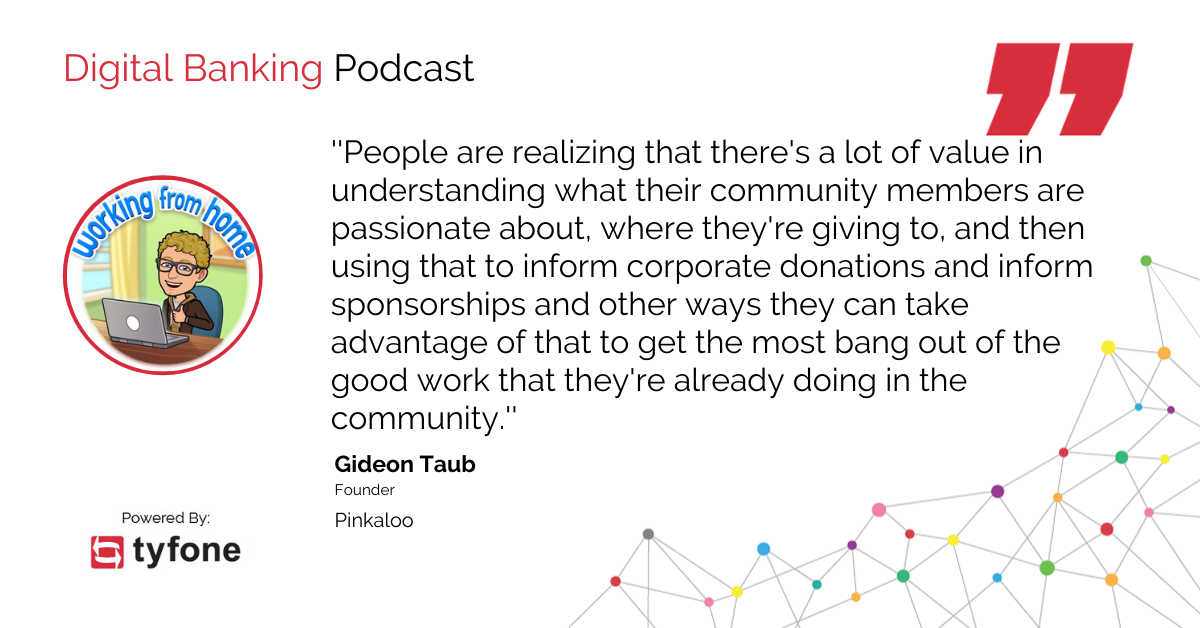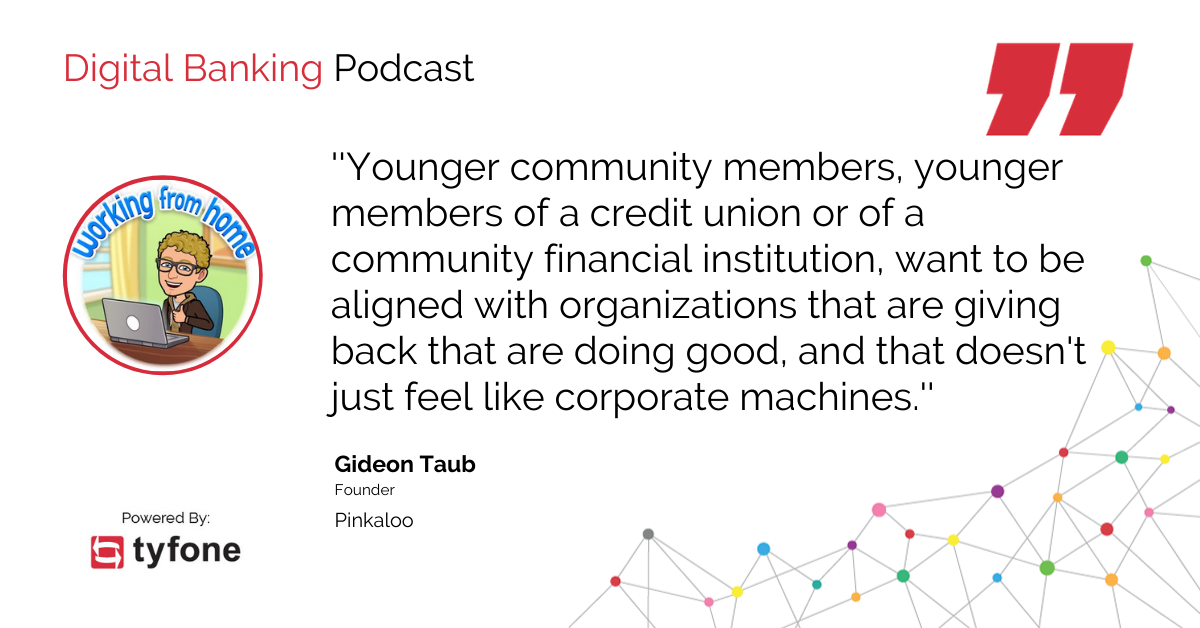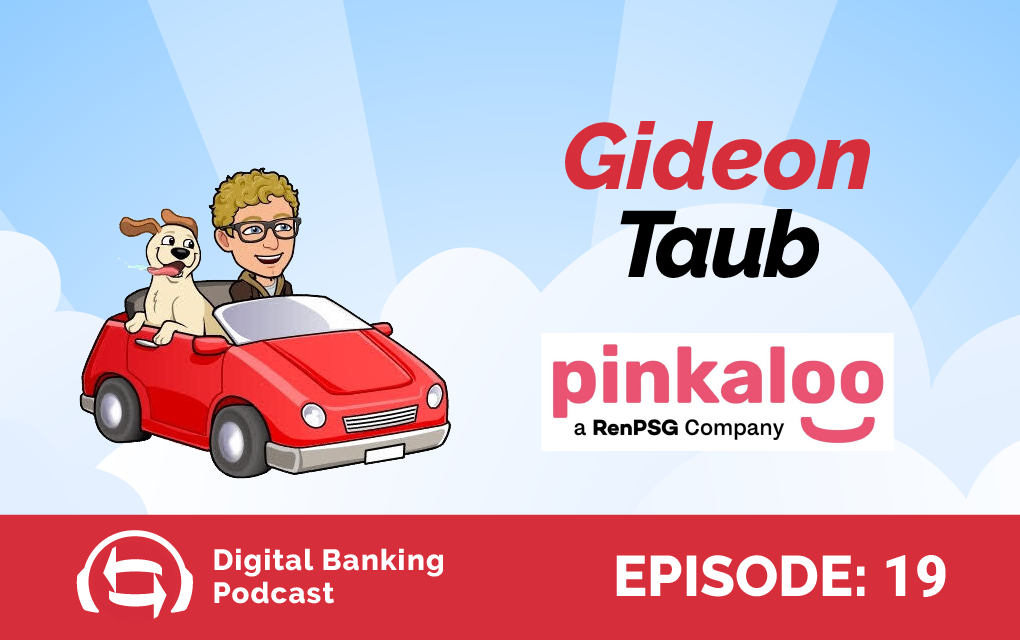The Impact of Community in Charitable Giving and How to Reduce the Barriers to Philanthropy
May 26, 2022
- Pinkaloo charitable giving platform aims to solve two significant barriers to philanthropy: discovery and donation management. To achieve this vision faster, the company was recently acquired by RenPSG.
- Founder Gideon Taub finds people are more likely to donate when they see their friend’s donation activity — because of his platform’s Giving Feed, even financial institutions can align their charity allocation to match their members’ interests.
- One way credit unions can incentivize charitable giving? Offer debit card roundups as a way to help members fund a giving account.
How much more important would philanthropy be in your life if you could access it in a fun and efficient way?
To make it easier for everyday donors to manage giving and connect to organizations, Gideon Taub founded Pinkaloo, a charitable giving platform that’s on a mission to democratize philanthropy.
Gideon’s passion for personal finance grew after a brief stint on Wall Street. Following that role, he became the first hire of an advertising tech startup he later grew to 300 employees and $350 million in revenue.
After leaving that business and tinkering with and shelving another fintech idea, Gideon realized his passion for democratizing charitable giving
On an episode of the Digital Banking Podcast, Gideon talks about how he works to revolutionize the approach to charity, and how community-oriented financial institutions like credit unions can play a role.

The friction points of donating
Pinkaloo’s mission is to enhance the donor experience and make it more accessible for everyone.
To do that, Gideon focused on two pain points to charitable giving to shape the innovation of the platform: discovery and donation management.
“As I was ramping up and learning the space, I came to realize there were a lot of national organizations that are just marketing machines, and have marketing budgets that rival some really large for-profit and retail companies.”
That leaves the hundreds of thousands of local charities people want to give to in a tough spot: Although they do the work that aligns with their community’s interests, they simply don’t have similar access to funding and sophisticated marketing efforts, so it’s more difficult to connect with them.
Additionally, while there’s been a lot of innovation to help charities raise money, Gideon says a centralized space to help donors manage their giving isn’t one of them.
Before Pinkaloo disrupted the industry, customers shared they were mailing 10 to 15 checks per year or inputting credit card information into numerous websites, despite the security risks. This disorganization led to hassles to itemize taxes and ensure they received all their tax receipts for charitable giving deductions.
Pinkaloo aims to overcome these friction points and help people be more proactive donors.
You might be more inclined to donate after a natural disaster or to support others through a pandemic, like COVID-19; sometimes, it takes your friend’s passions to inspire charity.
However, Gideon says, people “don’t actually have a plan, a budget or a strategy at the beginning of the year” for giving, as they do for other finances — Pinkaloo works to change that.

Using the role of community to impact philanthropy
According to Gideon, giving to charity has been a historically siloed and isolated activity.
But, he says, “Enabling people a place where it’s comfortable and appropriate to share the organizations they’re supporting leads to that sense of community.”
The Giving Feed on Pinkaloo’s platform lets members see where their peers donate, which serves as a great discovery tool to help users learn about new charities.
It also lets people feel more connected to their community — when we can view donation activity, Gideon says it enables social stamps of approval that lead us to say, “Maybe I should donate there, too.”
Another upside of this visibility is Pinkaloo’s financial institution clients get to see where their members donate.
After learning member donations differed from the organizations where they allocated their corporate donation spend, Pinkaloo’s clients reassessed the events they sponsored each year to find opportunities that resonated with the causes their members care about.
People’s desire to ensure their neighbors and communities benefit continues to trend upward, yet some national banks continue to make huge donations through their foundations with no sense for what happens locally.
That’s why Pinkaloo works with clients to authentically publicize the local organizations they support through credit union foundations and encourage their members to donate, too.
Doing so comes with benefits Gideon’s experienced himself: “Having the logo of my credit union or of my community financial institution front-and-center as I’m making that donation … carried weight we didn’t expect when we first started the business.”
Credit unions can bridge the gap to charitable giving
The landscape is changing.
National research shows 60% of consumers prefer to do their banking with a community-minded financial institution — yet, a large portion of those surveyed didn’t think those institutions offered the technology they need to manage their banking.
At the same time, “Younger members of a union or community financial institution want to be aligned with organizations that are giving back … and that don’t just feel like corporate machines,” says Gideon.
The impact of COVID-19 has popularized the development of virtual communities, including financial institutions through digital banking.
This gives credit unions and localized institutions a prime opportunity to make an impact that resonates with their communities and drives more engagement to their brands by incentivizing charitable giving with digital banking.
For example, Gideon says they can:
- Contribute $10 or $50 to a member’s charitable giving fund when they enroll in e-statements within 30 days of a new account opening.
- Offer debit card roundups as a way to help members fund their giving account.
- Set up direct deposit for charitable giving.
National Philanthropic Trust reports Americans gave $449.64 billion in 2019.
The Pinkaloo founder would love to see people who donate do it even more, and for those who don’t to start. However, he’s content just providing a platform that helps people give more efficiently to organizations they love.
“If I can just make that a little bit more efficient and more fun and engaging,” says Gideon, “that’s a win. Ultimately, if a credit union’s brand and logo can be associated with that and get some data on the backend around it, that feels like a win for all of us.”
Unlocking the gates to philanthropy
Pinkaloo has recently been acquired by charitable philanthropic solutions provider RenPSG, a move Gideon believes will achieve the company’s vision faster.
“Our vision is every family in the country at least has access to a giving account … We thought joining forces with RenPSG now would allow us to realize that a whole lot more quickly.”
As Gideon works to find more resources to deliver great experiences to donors and families to manage their giving, he also wants to reduce the hurdles for everyday people to access the benefits of donor-advised funds.
Typically, high-net-worth families leverage donor-advised funds to make large philanthropic gifts, get a tax break, then distribute the funds over time.
Instead of focusing on generating investment returns, Gideon wants to make these funds accessible and tailor them to the needs of everyday donors to enable them to discover more charities.
“It’s more about collaborating with other community members — it’s more about making giving fun and accessible and a bit lighthearted.”






